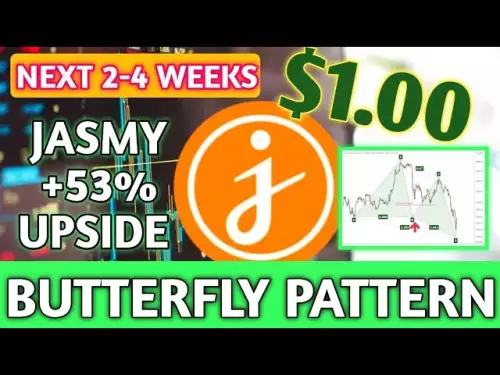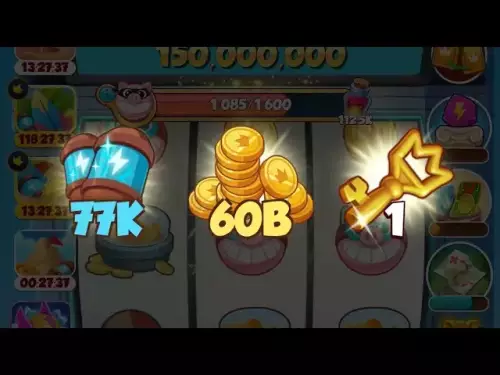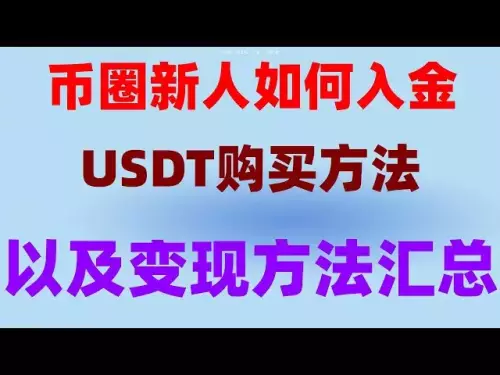-
 Bitcoin
Bitcoin $110400
-2.58% -
 Ethereum
Ethereum $4406
-7.45% -
 XRP
XRP $2.866
-5.19% -
 Tether USDt
Tether USDt $1.000
0.03% -
 BNB
BNB $845.1
-3.47% -
 Solana
Solana $188.1
-7.62% -
 USDC
USDC $0.0000
0.00% -
 TRON
TRON $0.3443
-4.76% -
 Dogecoin
Dogecoin $0.2097
-8.88% -
 Cardano
Cardano $0.8405
-7.45% -
 Chainlink
Chainlink $23.52
-9.19% -
 Hyperliquid
Hyperliquid $43.48
-5.35% -
 Ethena USDe
Ethena USDe $1.001
0.02% -
 Stellar
Stellar $0.3836
-6.11% -
 Sui
Sui $3.353
-8.52% -
 Bitcoin Cash
Bitcoin Cash $543.9
-7.28% -
 Avalanche
Avalanche $23.43
-8.32% -
 Hedera
Hedera $0.2306
-7.24% -
 UNUS SED LEO
UNUS SED LEO $9.573
-0.27% -
 Litecoin
Litecoin $108.7
-8.06% -
 Toncoin
Toncoin $3.133
-5.16% -
 Shiba Inu
Shiba Inu $0.00001204
-6.94% -
 Uniswap
Uniswap $9.749
-10.56% -
 Polkadot
Polkadot $3.755
-8.33% -
 Dai
Dai $1.000
-0.02% -
 Cronos
Cronos $0.1550
-0.65% -
 Bitget Token
Bitget Token $4.502
-3.42% -
 Monero
Monero $266.2
-3.14% -
 Aave
Aave $315.9
-8.85% -
 Ethena
Ethena $0.6253
-9.73%
What is a MAVOL crossover strategy?
The MAVOL crossover strategy uses volume moving averages to spot trend strength, with a short-term MAVOL crossing above/below the long-term MAVOL signaling bullish/bearish momentum in crypto markets.
Aug 06, 2025 at 02:57 pm
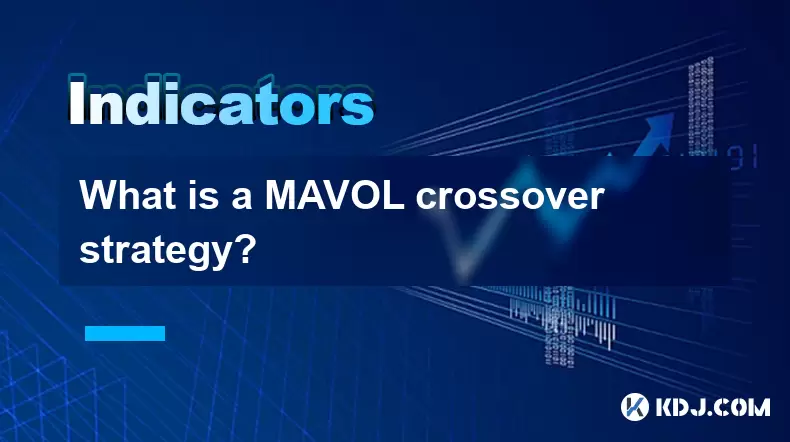
Understanding the MAVOL Crossover Strategy in Cryptocurrency Trading
The MAVOL crossover strategy is a technical analysis method used by traders in the cryptocurrency market to identify potential entry and exit points based on the interaction between two moving averages of trading volume. Unlike price-based moving averages, MAVOL (Moving Average of Volume) focuses exclusively on volume trends over specific time intervals. This strategy helps traders assess the strength or weakness behind price movements by analyzing changes in trading volume. When volume increases during a price trend, it often indicates strong market conviction. Conversely, declining volume may suggest a lack of interest or an impending reversal. The core principle of the MAVOL crossover is to compare a short-term volume moving average with a longer-term one and act when they intersect.
Components of the MAVOL Crossover System
To implement the MAVOL crossover strategy effectively, traders must understand its key components. The first is the short-term MAVOL, typically calculated over 5 to 10 periods, which reflects recent volume activity. The second is the long-term MAVOL, usually spanning 20 to 50 periods, representing the broader volume trend. These moving averages are plotted on a volume chart beneath the price chart. When the short-term MAVOL crosses above the long-term MAVOL, it signals increasing buying pressure and is interpreted as a bullish signal. Conversely, when the short-term MAVOL crosses below the long-term MAVOL, it suggests rising selling pressure and is considered bearish.
The choice of period lengths depends on the trader’s timeframe. For instance, day traders might use 5-period and 20-period MAVOL on 15-minute charts, while swing traders could apply 10-period and 50-period MAVOL on daily charts. The settings should align with the asset’s volatility and the trader’s risk tolerance. It’s crucial to note that volume alone does not dictate price direction, but it confirms the momentum behind price moves. Therefore, the MAVOL crossover is often used in conjunction with price action or other indicators for confirmation.
How to Set Up a MAVOL Crossover Indicator
Setting up the MAVOL crossover on a trading platform involves several precise steps. Most platforms like TradingView, MetaTrader, or Binance’s built-in charting tools support custom indicators or built-in volume moving averages.
- Open the chart of the cryptocurrency you wish to analyze, such as BTC/USDT or ETH/USDT.
- Navigate to the “Indicators” or “Studies” section and search for “Volume” or “Volume MA.”
- Add the first moving average of volume with a short period, for example, MAVOL(10).
- Add a second moving average of volume with a longer period, such as MAVOL(50).
- Customize the colors so the short-term line is green and the long-term line is red for visual clarity.
- Ensure both lines are applied to “Volume” and not price.
- Save the template for future use.
Once configured, the chart will display two lines oscillating beneath the volume bars. Traders watch for intersections between these lines. A green line crossing above the red line is a potential buy signal, while the reverse indicates a sell signal. Some traders also add alerts to notify them when a crossover occurs, especially useful for monitoring multiple assets.
Interpreting Crossover Signals in Real Market Conditions
In live cryptocurrency markets, not all MAVOL crossovers lead to profitable trades. False signals can occur during low-liquidity periods or during consolidation phases. For example, a bullish crossover during a sideways market might not result in a sustained upward move. To reduce risk, traders often combine the MAVOL strategy with price-based indicators like Moving Average Convergence Divergence (MACD) or Relative Strength Index (RSI).
A more robust approach involves checking whether the crossover coincides with a breakout from a key price level. If the short-term MAVOL crosses above the long-term MAVOL while the price breaks above a resistance level on high volume, the signal gains credibility. Similarly, a bearish crossover during a breakdown below support strengthens the sell case. It’s also wise to consider the broader market context—during a strong bull run, bullish crossovers may carry more weight, while in bear markets, bearish signals may dominate.
Practical Example: Applying MAVOL Crossover on Bitcoin
Consider a scenario on a daily Bitcoin chart. Over several weeks, Bitcoin trades between $28,000 and $31,000. The MAVOL(10) fluctuates around the MAVOL(50), indicating indecisive volume trends. Suddenly, Bitcoin surges past $31,000 on a day with significantly higher volume than average. On the volume sub-chart, the MAVOL(10) crosses above MAVOL(50), turning green. This confluence of price breakout and rising volume momentum suggests strong buyer interest.
A trader using this strategy might enter a long position after the candle closes, placing a stop-loss just below the breakout level, say at $30,500. As subsequent days show the short-term MAVOL remaining above the long-term one, the trend is considered valid. If, days later, the MAVOL(10) crosses back below MAVOL(50) while price stagnates near $33,000, it could signal weakening momentum, prompting a trader to take profits or tighten the stop-loss.
Common Pitfalls and Risk Management
Despite its usefulness, the MAVOL crossover strategy has limitations. One major pitfall is lagging signals—since moving averages are based on historical data, crossovers occur after the volume shift has begun. This delay can result in entering trades too late, especially in fast-moving crypto markets. Another issue is choppy volume patterns in low-cap altcoins, where volume spikes can be erratic and misleading.
To manage risk, traders should avoid acting on every crossover. Instead, they should wait for confirmation, such as a follow-through candle or alignment with trendlines. Position sizing is also critical—limiting exposure to 1–2% of capital per trade helps sustain losses from false signals. Using trailing stop-losses can protect profits during extended trends. Additionally, avoiding trades during major news events or low-volume periods (like weekends) reduces noise.
Frequently Asked Questions
Can the MAVOL crossover strategy be used on all cryptocurrencies?
Yes, the strategy applies to any cryptocurrency with sufficient trading volume and historical data. However, it performs best on high-liquidity pairs like BTC, ETH, or BNB. Low-volume altcoins often exhibit erratic volume patterns, leading to unreliable crossovers.
Is the MAVOL crossover effective on lower timeframes like 5-minute charts?
It can be used on lower timeframes, but with caution. On 5-minute or 15-minute charts, volume data is more volatile, increasing the chance of false signals. Traders should combine it with tighter filters, such as price channel breakouts or volume thresholds, to improve accuracy.
How do I differentiate between a genuine crossover and market noise?
A genuine crossover is confirmed when the short-term MAVOL remains above or below the long-term MAVOL for at least two consecutive periods and coincides with a clear price trend. If the lines cross briefly and revert, it’s likely noise. Also, crossovers accompanied by a significant increase in volume bars are more reliable.
Can I automate the MAVOL crossover strategy using bots?
Yes, many trading bots support custom volume-based strategies. You can program a bot to monitor MAVOL(10) and MAVOL(50), triggering buy orders when the former crosses above the latter and sell orders on the reverse. Ensure the bot includes filters for minimum volume and price trends to avoid over-trading.
Disclaimer:info@kdj.com
The information provided is not trading advice. kdj.com does not assume any responsibility for any investments made based on the information provided in this article. Cryptocurrencies are highly volatile and it is highly recommended that you invest with caution after thorough research!
If you believe that the content used on this website infringes your copyright, please contact us immediately (info@kdj.com) and we will delete it promptly.
- Heritage Distilling's Token Deal: A Bold Balance Sheet Strategy
- 2025-08-26 06:45:14
- Coinbase Hack, Solana Shenanigans, and Wallet Woes: What's a Crypto OG to Do?
- 2025-08-26 06:45:14
- Bitcoin Price, Cardano, Layer Brett: What's the Haps?
- 2025-08-26 05:30:13
- UAE's Bitcoin Bonanza: From Mining Hub to Crypto Powerhouse
- 2025-08-26 06:10:13
- Ethereum, Liquidations, and Bitcoin: A Crypto Market Rollercoaster
- 2025-08-26 05:45:13
- Ethereum Whale Dumps $25M ETH: Panic Sell or Strategic Move?
- 2025-08-26 05:50:12
Related knowledge
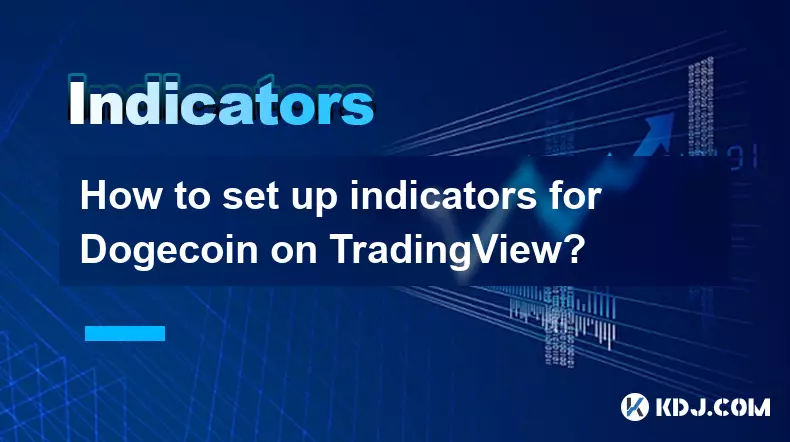
How to set up indicators for Dogecoin on TradingView?
Aug 25,2025 at 04:23pm
Understanding Dogecoin and TradingView1. Dogecoin, initially created as a meme-based cryptocurrency, has evolved into a widely traded digital asset. I...

What does it mean when the +DI and -DI cross frequently in the DMI indicator but the ADX is flattening?
Aug 11,2025 at 03:15am
Understanding the DMI Indicator ComponentsThe Directional Movement Index (DMI) is a technical analysis tool composed of three lines: the +DI (Positive...

What does the sudden appearance of a "dark cloud cover" candlestick pattern during an uptrend indicate?
Aug 13,2025 at 11:35am
Understanding the 'Dark Cloud Cover' Candlestick PatternThe dark cloud cover is a bearish reversal pattern in technical analysis that typically appear...

What does it mean when the moving average, MACD, and RSI all send buy signals simultaneously?
Aug 11,2025 at 01:42pm
Understanding the Convergence of Technical IndicatorsWhen the moving average, MACD, and RSI all generate buy signals at the same time, traders interpr...

What does it mean when both the KDJ indicator and the RSI show overbought signals simultaneously?
Aug 13,2025 at 11:35am
Understanding the KDJ Indicator in Cryptocurrency TradingThe KDJ indicator is a momentum oscillator derived from the Stochastic Oscillator, widely use...

What does it mean when the price is trading above the SAR indicator but the red dots are densely packed?
Aug 09,2025 at 11:49pm
Understanding the SAR Indicator and Its Visual SignalsThe SAR (Parabolic Stop and Reverse) indicator is a technical analysis tool used primarily to de...

How to set up indicators for Dogecoin on TradingView?
Aug 25,2025 at 04:23pm
Understanding Dogecoin and TradingView1. Dogecoin, initially created as a meme-based cryptocurrency, has evolved into a widely traded digital asset. I...

What does it mean when the +DI and -DI cross frequently in the DMI indicator but the ADX is flattening?
Aug 11,2025 at 03:15am
Understanding the DMI Indicator ComponentsThe Directional Movement Index (DMI) is a technical analysis tool composed of three lines: the +DI (Positive...

What does the sudden appearance of a "dark cloud cover" candlestick pattern during an uptrend indicate?
Aug 13,2025 at 11:35am
Understanding the 'Dark Cloud Cover' Candlestick PatternThe dark cloud cover is a bearish reversal pattern in technical analysis that typically appear...

What does it mean when the moving average, MACD, and RSI all send buy signals simultaneously?
Aug 11,2025 at 01:42pm
Understanding the Convergence of Technical IndicatorsWhen the moving average, MACD, and RSI all generate buy signals at the same time, traders interpr...

What does it mean when both the KDJ indicator and the RSI show overbought signals simultaneously?
Aug 13,2025 at 11:35am
Understanding the KDJ Indicator in Cryptocurrency TradingThe KDJ indicator is a momentum oscillator derived from the Stochastic Oscillator, widely use...

What does it mean when the price is trading above the SAR indicator but the red dots are densely packed?
Aug 09,2025 at 11:49pm
Understanding the SAR Indicator and Its Visual SignalsThe SAR (Parabolic Stop and Reverse) indicator is a technical analysis tool used primarily to de...
See all articles





















